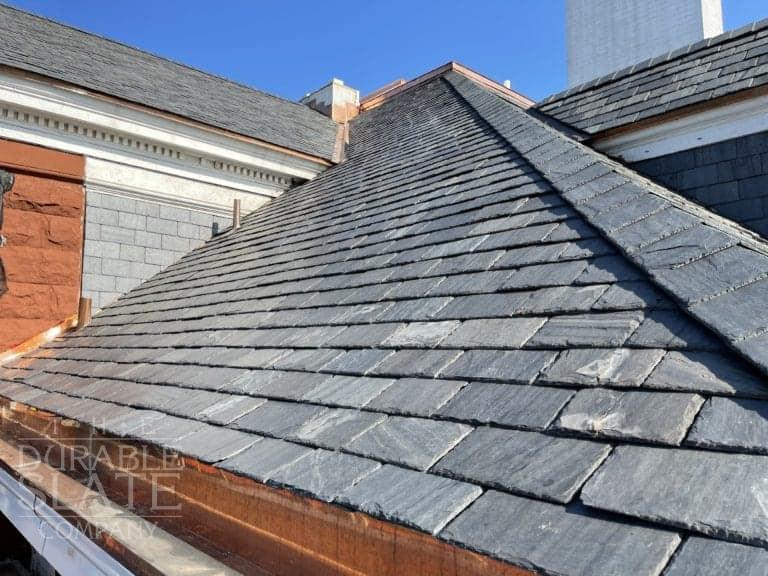The Advantages of Dealing With Gainesville FL Roofing Companies
The Advantages of Dealing With Gainesville FL Roofing Companies
Blog Article
Best Practices for Ensuring Proper Roof Air Flow
A well balanced consumption and exhaust air vent ratio, frequently 1:300, plays an essential role, with intake vents preferably put at the reduced side of the roof covering for trendy air entry and exhaust vents at the top for cozy air exit. Maintaining insulation away from vents is critical to protect against air movement restriction.
Understand Ventilation Basics
Appropriately recognizing air flow basics is essential for making sure the long life and efficiency of roofing systems. Reliable ventilation mitigates moisture build-up and temperature extremes in the attic room, both of which can lead to substantial architectural damages gradually. A well-ventilated roof helps in protecting against usual issues such as mold and mildew development, wood rot, and ice dams, which can endanger the honesty of the roofing products and the underlying frameworks.
The main objective of air flow is to facilitate the movement of air, enabling a consistent exchange in between the outside and interior environments. This equilibrium is achieved through a combination of intake and exhaust vents that function with each other to preserve optimal airflow. Intake vents, typically located along the eaves or soffits, allow fresh air to go into the attic area, while exhaust vents, typically situated at or near the roofing ridge, enable hot, humid air to run away.
Secret aspects affecting the effectiveness of roof air flow include correct positioning, adequate sizing, and ensuring that both consumption and exhaust vents are unblocked. Regular assessment and maintenance are essential to identify prospective blockages, damages, or inefficiencies in the ventilation system, thereby securing the roofing's efficiency and durability.
Sorts Of Roofing System Vents
Roofing vents play a critical role in preserving effective attic room ventilation and, by extension, the total health and wellness of the roof system. Different kinds of roof covering vents are offered, each with special advantages tailored to particular roof covering needs.

Soffit vents are installed under the eaves and work in tandem with roof covering vents to make certain a balanced intake and exhaust system. By enabling cooler air to enter from below, soffit vents facilitate the expulsion of warm air via top vents. Gable vents, located on the outside wall surfaces of the attic, deal one more efficient service, especially in homes with saddleback roofs.
Assess Your Current Air Flow

Next, think about the age and condition of your roofing products and air flow parts. Older systems may not comply with current structure codes or may have deteriorated over time, reducing their performance. Conduct a complete assessment to determine any type of indications of damage, such as rust, damages, or spaces that can endanger the system's performance.
In addition, determine the attic temperature and moisture levels. High temperature levels and moisture can show insufficient air flow.
Installment Best Practices
Effective installation of roofing ventilation systems is extremely important for making sure optimal performance and long life. Correct installation starts with comprehending the details air flow needs of the roof covering and the structure it covers. This involves calculating the right proportion of intake to exhaust vents, generally sticking to the 1:300 rule, which states one square foot of ventilation for each 300 square feet of attic floor room.

The positioning of vents is similarly important. Consumption vents must be installed at the roofing's lower edge, typically in the soffits, to enable amazing air to enter. Exhaust vents, on the various other hand, need to be set up near or at the roof's optimal to facilitate the leave of warm, damp air. This produces an all-natural air movement that aids maintain temperature level and dampness balance within the attic room room.
Seal all air vent links meticulously to avoid air leaks and possible water infiltration. Use top quality products and follow maker standards to guarantee durability and effectiveness. Additionally, incorporating ridge vents with baffles can substantially enhance airflow effectiveness by avoiding wind-driven rain and snow from going into the attic room.
Eventually, exact installment of roof ventilation systems alleviates potential problems such as mold and mildew growth, ice dams, and structural damages, making certain the roofing system's honesty and the structure's total health and wellness.
Routine Upkeep Tips
Consistency in maintenance practices is basic to making sure the long-term efficiency of roof ventilation systems. Routine examinations are critical, ideally performed biannually-- in the springtime and autumn. Throughout these assessments, guarantee that vents are without particles, Continue nests, and other blockages that could restrain air movement. Check for any signs of moisture accumulation or mold, as these can suggest incorrect air flow or leaks (gainesville fl roofing companies).
Cleaning the vents is another necessary task. Use a soft brush or a vacuum cleaner to get rid of dirt and debris from intake and exhaust vents. Beware not to damage the air vent displays or louvers throughout the process. Furthermore, examine the attic space for any indicators of water damages, which might compromise the honesty of the roof covering system.
Proper insulation is equally important. Guarantee that attic room insulation does not block the vents, as this can seriously restrict airflow. If any kind of insulation has changed or cleared up, reposition or change it to keep an effective barrier.
Finally, change any damaged or missing out on parts without delay. Broken vents, cracked shingles, or shabby flashing can all add to poor ventilation and needs to be dealt with without hold-up. Routine upkeep makes sure that the roofing ventilation system works optimally, thereby extending the life-span have a peek at these guys of the roof covering itself.
Verdict
Ensuring proper roof ventilation is vital for maintaining the efficiency and sturdiness of a roofing system. Adherence to the 1:300 intake and exhaust vent ratio, coupled with the calculated placement of vents, is essential.
A well balanced consumption and exhaust vent proportion, frequently 1:300, plays a crucial role, with intake vents ideally placed at the reduced side of the roof for amazing air access and exhaust vents at the height for warm air exit. Intake vents, normally located along the soffits or eaves, allow fresh air to go into the attic space, while exhaust vents, often positioned at or near the roof ridge, make it possible for hot, humid air to leave.
Soffit vents are set up under the eaves and work in tandem with roofing vents to make sure a well balanced consumption and exhaust system. By permitting cooler air to get in from find out this here below, soffit vents help with the expulsion of warm air with upper vents. Adherence to the 1:300 intake and exhaust air vent ratio, combined with the calculated positioning of vents, is essential.
Report this page